Posted on August 10th, 2018 by Mary Lord
 Without bees to pollinate flowers, there would be no fruit to harvest. As bee deaths outpace the hives’ ability to regenerate — in 2016, the United States lost 44 percent of all honeybee colonies — farmers have turned to researchers for help. One partial solution already is in the works: an insect-sized drone capable of artificial pollination.
Without bees to pollinate flowers, there would be no fruit to harvest. As bee deaths outpace the hives’ ability to regenerate — in 2016, the United States lost 44 percent of all honeybee colonies — farmers have turned to researchers for help. One partial solution already is in the works: an insect-sized drone capable of artificial pollination.
Image ©Savannah School of Art and Design
Read More
Filed under: Special Features | Comments Off on Robot Bees Take Wing
Tags: Agricultural Engineering, bees, colony collapse, drone, Eijiro Miyako, Japan National Institute of Advanced Industrial Science and Technology, NPR, pollinator, Robotics
Posted on August 9th, 2018 by Mary Lord
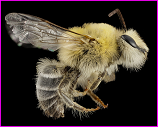 Middle school students design a robotic “bee” that would have the potential to pollinate crops in place of a native bee and then evaluate their model against real pollinators.
Middle school students design a robotic “bee” that would have the potential to pollinate crops in place of a native bee and then evaluate their model against real pollinators.
Read More
Filed under: Class Activities, Grades 6-8, Grades K-5, Lesson Plans | Comments Off on Engineer a Bee
Tags: Agricultural Engineering, bee, Class Activities, design challenge, Grades 6-8, Lesson Plan, Mechanical engineering, plant, pollinator, robo-bees, Robotics
Posted on August 9th, 2018 by Mary Lord
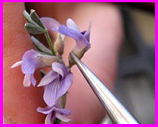 Students in grades 3 to 5 learn about the engineering design process by making a 2-dimensional model (graphic illustration) of an apparatus that will pollinate a field.
Students in grades 3 to 5 learn about the engineering design process by making a 2-dimensional model (graphic illustration) of an apparatus that will pollinate a field.
Read More
Filed under: Class Activities, Grades K-5, Lesson Plans | Comments Off on Honeybee Human Design Challenge
Tags: Agricultural Engineering, Class Activities, crops, design challenge, Grades K-5, honey bee, Lesson Plan, Mechanical engineering, pollinator
Posted on April 6th, 2018 by Mary Lord
 Indoor ‘vertical farming’ could be an answer to urban food needs and shrinking agricultural space – if cost and energy obstacles can be overcome. Already, pioneers are sprouting up in places like Japan, Singapore, and in U.S. university “closed environment agriculture” labs.
Indoor ‘vertical farming’ could be an answer to urban food needs and shrinking agricultural space – if cost and energy obstacles can be overcome. Already, pioneers are sprouting up in places like Japan, Singapore, and in U.S. university “closed environment agriculture” labs.
Read More
Filed under: Special Features | Comments Off on Room to Grow
Tags: Aerofarms, Agricultural Engineering, ASEE Prism magazine, botany, Controlled Environment Agriculture, Cornell School of Integrative Plant Science, Dickson Despommier, farm to table, food supply, green infrastructure, greenhouse, Murat Kacira, Neil Mattson, Plantagon, plants, Plenty, Public Policy, Sky Greens, Sustainability, Tom Gibson, University of Arizona, University of Wyoming, urban agriculture, urban farming, vegetables, vertical farms
Posted on November 28th, 2016 by Mary Lord
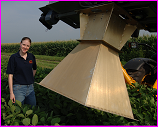 From the air or highway, America’s fruited plains present a uniform vista of vast abundance. Not to Amy Kaleita. The associate professor of agricultural and biosystems engineering at Iowa State University sees a “somewhat chaotic” array of micro-plots, each with unique hydrology, root depths, soil characteristics – all of them ripe opportunities for smart technology to enhance both sustainability and food production using “precision conservation.”
From the air or highway, America’s fruited plains present a uniform vista of vast abundance. Not to Amy Kaleita. The associate professor of agricultural and biosystems engineering at Iowa State University sees a “somewhat chaotic” array of micro-plots, each with unique hydrology, root depths, soil characteristics – all of them ripe opportunities for smart technology to enhance both sustainability and food production using “precision conservation.”
Read More
Filed under: Special Features | Comments Off on Soil Whisperer
Tags: Agricultural Engineering, Amy Kaleita, Environmental Engineering, farming, Iowa State University, micro, micro-plots, precision conservation, sensors
Posted on November 23rd, 2016 by Mary Lord
 In this three-part activity, students in grades 5 to 7 act as agricultural engineers, learning about and testing the effectiveness of a sustainable pest-control technique that uses organic waste and sunlight rather than toxic chemicals to reduce weeds.
In this three-part activity, students in grades 5 to 7 act as agricultural engineers, learning about and testing the effectiveness of a sustainable pest-control technique that uses organic waste and sunlight rather than toxic chemicals to reduce weeds.
Read More
Filed under: Class Activities, Grades 6-8, Grades 6-8, Grades K-5, Lesson Plans | Comments Off on Soil Biosolarization: Sustainable Weed Killer
Tags: Agricultural Engineering, biosolarization, Class Activities, Environmental science, farming, Grades 6-8, Grades K-5, growing, soil, sustainable agriculture
Posted on August 14th, 2012 by Mary Lord
 In this week-long activity, student teams in grades 5 – 7 study the effects of evaporation by observing and measuring the ongoing evaporation of water in pans that contain soil or other variables, then then assess what factors may affect evaporation.
In this week-long activity, student teams in grades 5 – 7 study the effects of evaporation by observing and measuring the ongoing evaporation of water in pans that contain soil or other variables, then then assess what factors may affect evaporation.
Read More
Filed under: Class Activities, Grades 6-8 | Comments Off on Activity: Eyewitness to Evaporation
Tags: Agricultural Engineering, Civil Engineering, dam, drought, Earth Science, evaporation, soil, Water Resources
Posted on August 7th, 2012 by Mary Lord
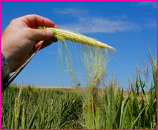 As one of the worst droughts in decades continues to shrivel reservoirs and sear fields, the U.S. Department of Agriculture has designated more than half of all counties – 1,584 in 32 states – primary disaster areas this growing season. While the dry, hot spell has decimated agriculture, it also has strained the steel, asphalt, and other engineered parts of the nation’s infrastructure.
As one of the worst droughts in decades continues to shrivel reservoirs and sear fields, the U.S. Department of Agriculture has designated more than half of all counties – 1,584 in 32 states – primary disaster areas this growing season. While the dry, hot spell has decimated agriculture, it also has strained the steel, asphalt, and other engineered parts of the nation’s infrastructure.
Read More
Filed under: Special Features | Comments Off on Drought Parches Over Half of U.S.
Tags: Agricultural Engineering, Army Corps of Engineers, barge, buckling, Civil Engineering, corn, crops, Department of Agriculture, drought, highway, hydrology, infrastructure, Mississippi River, Weather
Posted on February 13th, 2012 by Mary Lord
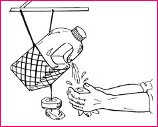 In this service-learning activity, teams of students in grades 10-12 learn the basic principles of fluid dynamics by designing and testing a prototype system to pipe water from a storage tank to a Tippy Tap hand-washing station similar to inexpensive homemade devices used extensively in the developing world.
In this service-learning activity, teams of students in grades 10-12 learn the basic principles of fluid dynamics by designing and testing a prototype system to pipe water from a storage tank to a Tippy Tap hand-washing station similar to inexpensive homemade devices used extensively in the developing world.
Read More
Filed under: Class Activities, Grades 9-12, Grades 9-12, Grades 9-12, Lesson Plans | Comments Off on Lesson: Tippy Tap Hand-Washer
Tags: Agricultural Engineering, Bernoulli, Class Activities, developing nation, energy conservation, Environmental Engineering, fluid dynamics, Grades 9-12, Lesson Plan, pipe systems, pipes, pressure, sanitation, service learning, velocity, Water
 Without bees to pollinate flowers, there would be no fruit to harvest. As bee deaths outpace the hives’ ability to regenerate — in 2016, the United States lost 44 percent of all honeybee colonies — farmers have turned to researchers for help. One partial solution already is in the works: an insect-sized drone capable of artificial pollination.
Without bees to pollinate flowers, there would be no fruit to harvest. As bee deaths outpace the hives’ ability to regenerate — in 2016, the United States lost 44 percent of all honeybee colonies — farmers have turned to researchers for help. One partial solution already is in the works: an insect-sized drone capable of artificial pollination.








 Middle school students design a robotic “bee” that would have the potential to pollinate crops in place of a native bee and then evaluate their model against real pollinators.
Middle school students design a robotic “bee” that would have the potential to pollinate crops in place of a native bee and then evaluate their model against real pollinators. Students in grades 3 to 5 learn about the engineering design process by making a 2-dimensional model (graphic illustration) of an apparatus that will pollinate a field.
Students in grades 3 to 5 learn about the engineering design process by making a 2-dimensional model (graphic illustration) of an apparatus that will pollinate a field. Indoor ‘vertical farming’ could be an answer to urban food needs and shrinking agricultural space – if cost and energy obstacles can be overcome. Already, pioneers are sprouting up in places like Japan, Singapore, and in U.S. university “closed environment agriculture” labs.
Indoor ‘vertical farming’ could be an answer to urban food needs and shrinking agricultural space – if cost and energy obstacles can be overcome. Already, pioneers are sprouting up in places like Japan, Singapore, and in U.S. university “closed environment agriculture” labs. From the air or highway, America’s fruited plains present a uniform vista of vast abundance. Not to Amy Kaleita. The associate professor of agricultural and biosystems engineering at Iowa State University sees a “somewhat chaotic” array of micro-plots, each with unique hydrology, root depths, soil characteristics – all of them ripe opportunities for smart technology to enhance both sustainability and food production using “precision conservation.”
From the air or highway, America’s fruited plains present a uniform vista of vast abundance. Not to Amy Kaleita. The associate professor of agricultural and biosystems engineering at Iowa State University sees a “somewhat chaotic” array of micro-plots, each with unique hydrology, root depths, soil characteristics – all of them ripe opportunities for smart technology to enhance both sustainability and food production using “precision conservation.” In this three-part activity, students in grades 5 to 7 act as agricultural engineers, learning about and testing the effectiveness of a sustainable pest-control technique that uses organic waste and sunlight rather than toxic chemicals to reduce weeds.
In this three-part activity, students in grades 5 to 7 act as agricultural engineers, learning about and testing the effectiveness of a sustainable pest-control technique that uses organic waste and sunlight rather than toxic chemicals to reduce weeds.  In this week-long activity, student teams in grades 5 – 7 study the effects of evaporation by observing and measuring the ongoing evaporation of water in pans that contain soil or other variables, then then assess what factors may affect evaporation.
In this week-long activity, student teams in grades 5 – 7 study the effects of evaporation by observing and measuring the ongoing evaporation of water in pans that contain soil or other variables, then then assess what factors may affect evaporation. As one of the worst droughts in decades continues to shrivel reservoirs and sear fields, the U.S. Department of Agriculture has designated more than half of all counties – 1,584 in 32 states – primary disaster areas this growing season. While the dry, hot spell has decimated agriculture, it also has strained the steel, asphalt, and other engineered parts of the nation’s infrastructure.
As one of the worst droughts in decades continues to shrivel reservoirs and sear fields, the U.S. Department of Agriculture has designated more than half of all counties – 1,584 in 32 states – primary disaster areas this growing season. While the dry, hot spell has decimated agriculture, it also has strained the steel, asphalt, and other engineered parts of the nation’s infrastructure. In this service-learning activity, teams of students in grades 10-12 learn the basic principles of fluid dynamics by designing and testing a prototype system to pipe water from a storage tank to a Tippy Tap hand-washing station similar to inexpensive homemade devices used extensively in the developing world.
In this service-learning activity, teams of students in grades 10-12 learn the basic principles of fluid dynamics by designing and testing a prototype system to pipe water from a storage tank to a Tippy Tap hand-washing station similar to inexpensive homemade devices used extensively in the developing world.